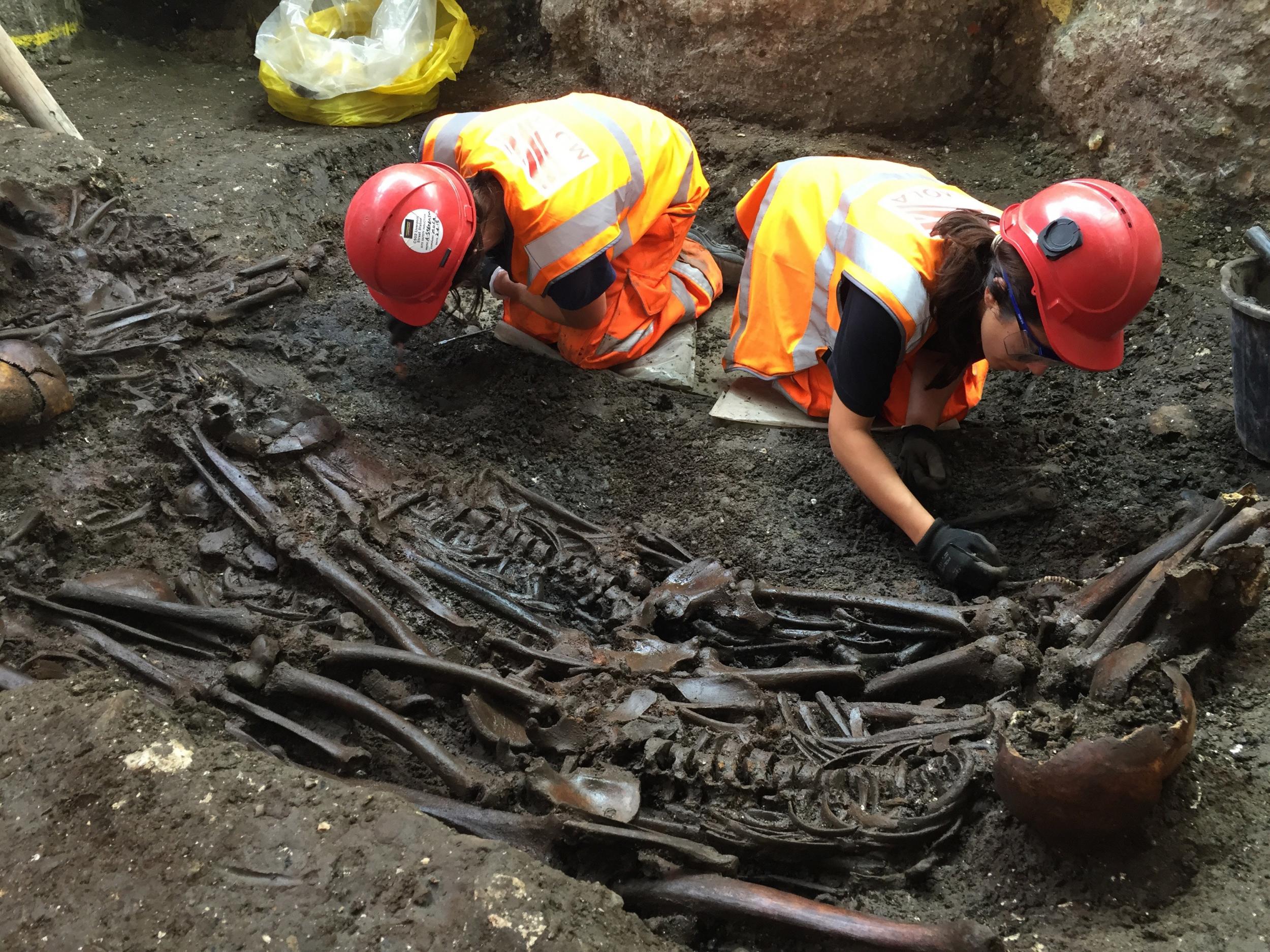Cause of 1665 Great Plague of London confirmed through DNA testing
The Great Plague of London killed almost a quarter of the city's population at the time

Your support helps us to tell the story
This election is still a dead heat, according to most polls. In a fight with such wafer-thin margins, we need reporters on the ground talking to the people Trump and Harris are courting. Your support allows us to keep sending journalists to the story.
The Independent is trusted by 27 million Americans from across the entire political spectrum every month. Unlike many other quality news outlets, we choose not to lock you out of our reporting and analysis with paywalls. But quality journalism must still be paid for.
Help us keep bring these critical stories to light. Your support makes all the difference.
Researchers have confirmed the cause of the 1665 Great Plague by studying DNA from a mass burial pit discovered in east London last year.
DNA was analysed from 20 skeletons excavated from the Bedlam burial ground, unearthed during the construction of a new Crossrail station at Liverpool Street.
A significant proportion of the samples tested positive for yersina pestis, the bacterium responsible for the 1348 Black Death epidemic and the 1855 bubonic plague outbreak in China.
This is the first identification of plague DNA from 17th century Britain, when the Great Plague of London claimed an estimated 100,000 lives – almost a quarter of London’s population at the time.
The findings shed light on the epidemic and pave the way for greater understanding of the disease both historically and today, Don Walker, Senior Human Osteologist at the Museum of London Archaeology, told the Independent.
“It’s significant because we had this famous, severe outbreak of plague in 1665, but until very recently, there was quite a lot of doubt about what had caused it,” he said.

“Four or five years back, [scientists] studied some skeletons from the Black Death, which was the first outbreak of plague in Britain.
“They identified what had caused the black death in the middle of the 14th century was yersina pestis, the plague bacterium, but they weren’t sure what caused later outbreaks of the plague. It appears now that it was the same bacterium, that lasted throughout those centuries.”
The skeletons' teeth were sent to the Max Planck Institute in Jena, Germany, for analysis.
Daniel Defoe famously described the gruesome effects of the Great Plague, which causes painful swollen lymph nodes or ‘buboes’, in his 18th century Journal of the Plague Year.
Victims suffered “violent fevers, vomitings, insufferable headaches, pains in the back, and so up to ravings and ragings with those pains” before they died, he wrote.
While the Black Death is said to have wiped out 30 percent of Europe’s medieval population, the disease today tends to be less infectious and are more easily treated with antibiotics, said Mr Walker.
In 2013, there were 783 cases of plague reported worldwide, with 126 deaths, according to the World Health Organisation.
“The reason why they thought the Great Plague might be a different disease to the Black Death is that plague back then acted in a different way to the way modern plague,” said Mr Walker.
“We’re in what’s called the third pandemic,” he said. “The plague does still spread from rodent populations, but it doesn’t spread very easily in the human population.”
Studying DNA from the skeletons of plague victims, such as those found during digs to build the new Elizabeth Line in 2015, is the only way of obtaining vital information needed to better understand the disease, said Mr Walker.
“If you compare this information to both modern plague DNA and black death DNA from a few centuries before, you can try and work out exactly what’s going on,” he said.
“It spread like through wildfire in London in 1665. Was there a mutation in the disease that suddenly meant it was affecting us? It stopped affecting us at the end of the century, and we don’t really know why.”
In July, a 10-year-old Russian boy was reported to have caught the plague from a marmot while hunting in the Siberian mountains.
Subscribe to Independent Premium to bookmark this article
Want to bookmark your favourite articles and stories to read or reference later? Start your Independent Premium subscription today.
Join our commenting forum
Join thought-provoking conversations, follow other Independent readers and see their replies
Comments